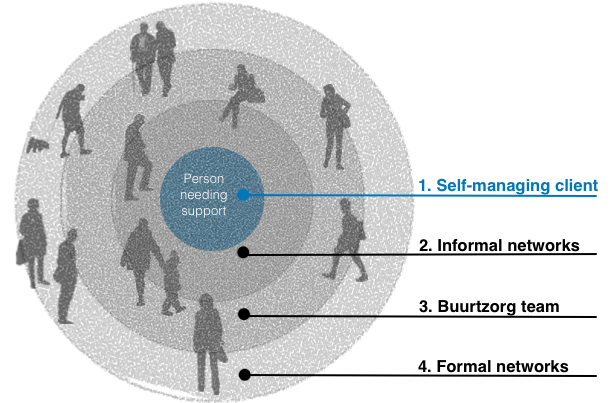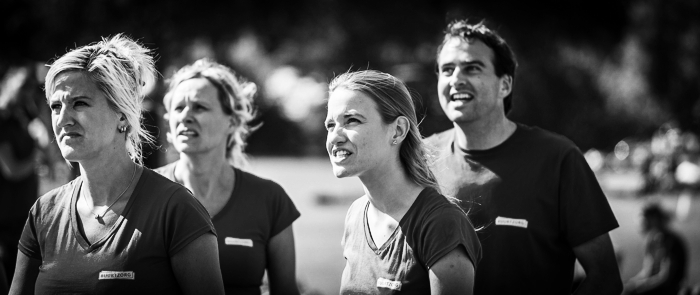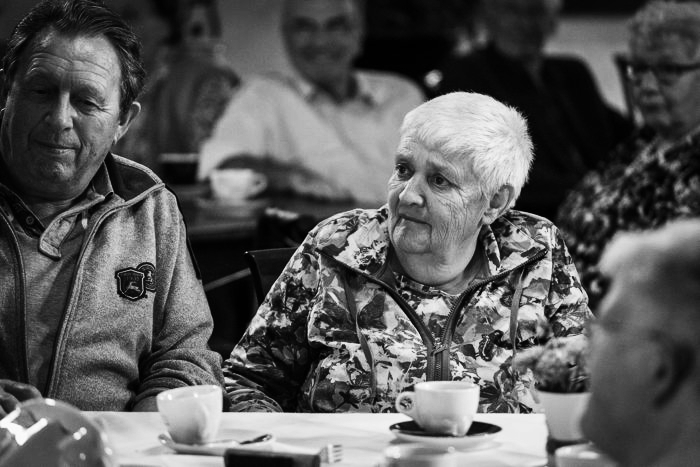Buurtzorg’s model of care
The Buurtzorg onion model starts from the client perspective and works outwards to assemble solutions that bring independence and improved quality of life.

Self-managing clients
The onion model assembles the building blocks for independence based on universal human values:
- People want control over their own lives for as long as possible
- People strive to maintain or improve their own quality of life
- People seek social interaction
- People seek ‘warm’ relationships with others.
The professional attunes to the client and their context, taking into account the living environment, the people around the client, a partner or relative at home, and on into the client’s informal network; their friends, family, neighbours and clubs as well as professionals already known to the client in their formal network.
In this way the professional seeks to build a solution involving the client and their formal and informal networks. Self-management, continuity, building trusting relationships, and building networks in the neighbourhood are all important and logical principles for the teams.
Self-managing teams
Self-managing teams have professional freedom with responsibility. A team of 12 work in a neighbourhood, taking care of people needing support as well managing the team’s work. A new team will find its own office in the neighbourhood, spend time introducing themselves to the local community and getting to know GPs and therapists and other professionals. The team decide how they organise the work, share responsibilities and make decisions, through word of mouth and referrals the team build-up a caseload.

Buurtzorg teams are entrepreneurial in spirit, continually improving the organisation and services. All of Buurtzorg innovations come from one person or a team having an idea and the freedom to try something new. For example, Buurtzorg has an annual national Walker-race – started by one team and their clients organising a neighbourhood walker-race – and the idea has now spread across the Buurtzorg community of 10,000 nurses.
OMAHA System & Buurtzorg Web
The Omaha System is a research-based, standardised taxonomy for health care. Buurtzorg has incorporated OMAHA into it’s own IT system, Buurtzorg Web, to facilitate;
- A holistic approach; client care from a holistic perspective, not just physiological aspects
- Client care suitable for all ages regardless of medical conditions, etc.
- The whole care-process; assessment, interventions and outcomes
- Patient self-management and patient empowerment
- Public health and community nursing tasks
- A comprehensive yet practical classification system
- Easy to understand terms and structures
- Multi-disciplinary use / understood by others outside the nursing profession.
Karinvisit from Buurtzorg Nederland on Vimeo.
